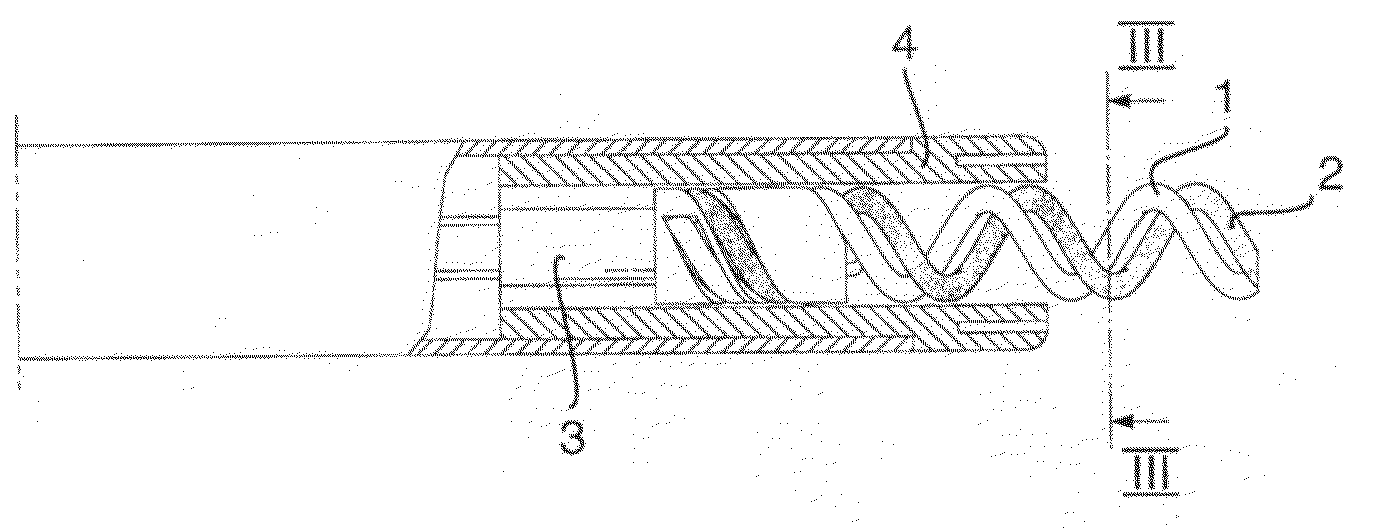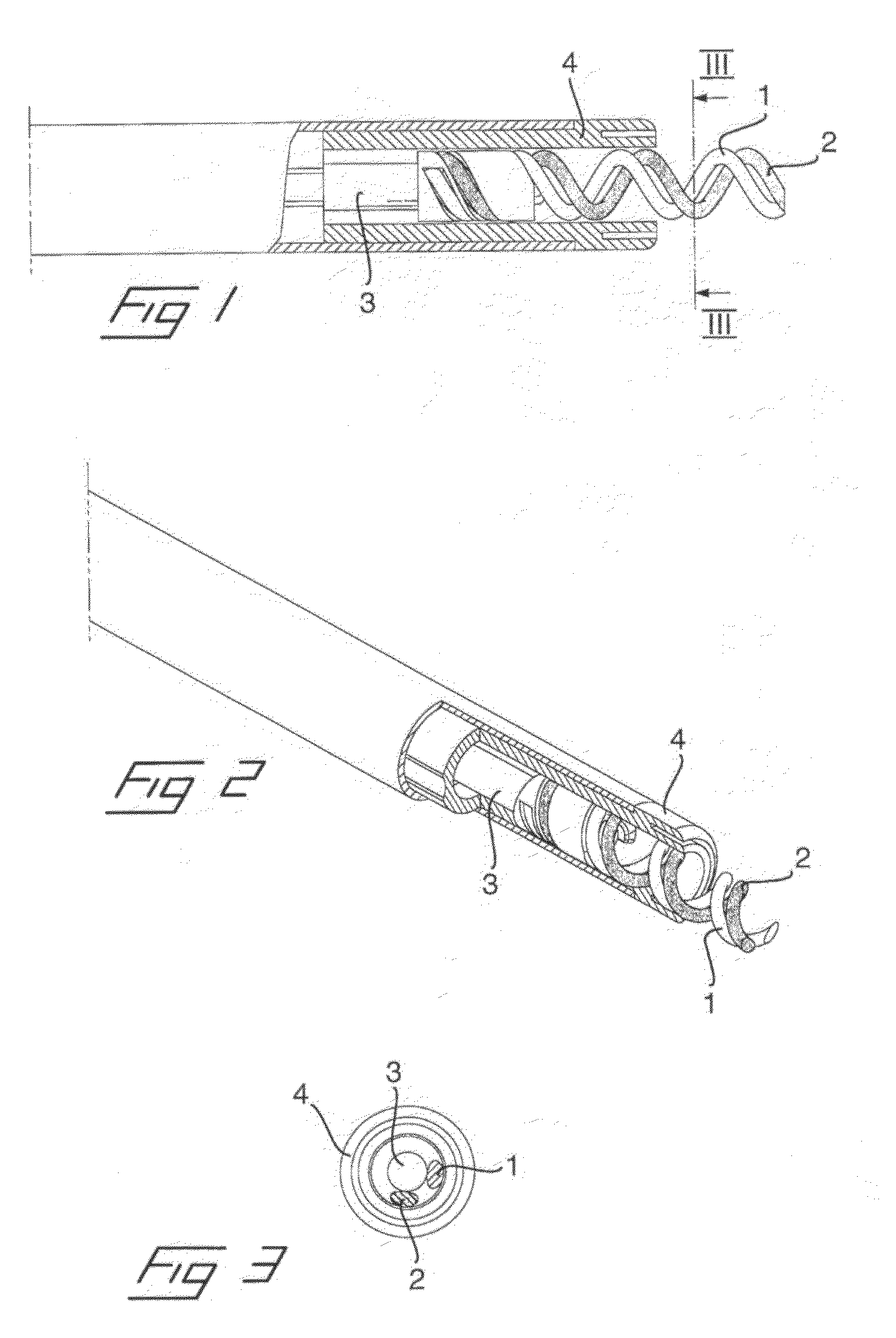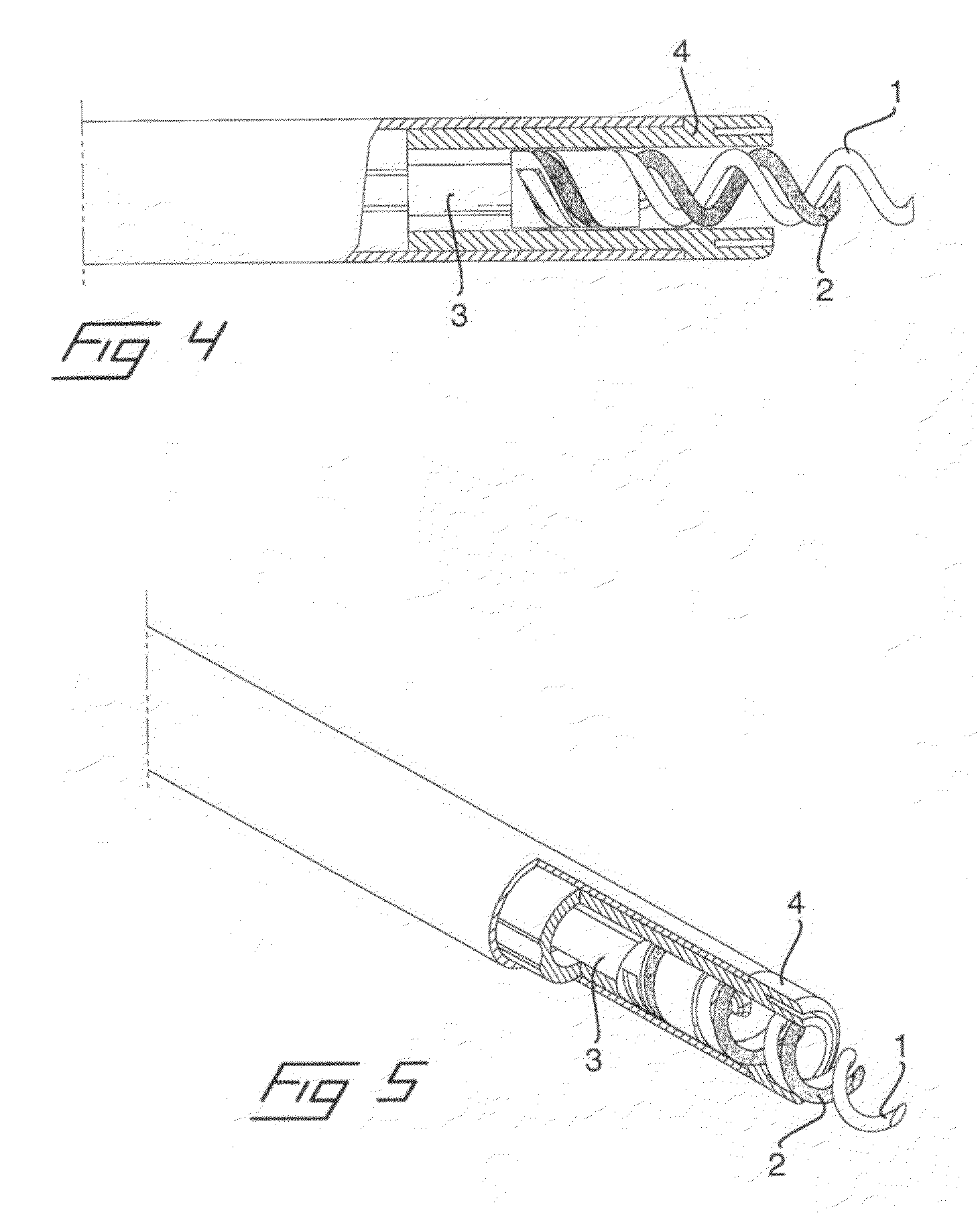Medical implantable lead and a method for attaching the same
- Summary
- Abstract
- Description
- Claims
- Application Information
AI Technical Summary
Benefits of technology
Problems solved by technology
Method used
Image
Examples
first embodiment
[0029]an arrangement according to the invention is shown in FIGS. 1-3. In accordance with the present invention, a dual helix fixation arrangement has two fixation helices 1, 2, each formed of a helical wire and each terminating in a sharp point that is capable of penetrating the endocardium and the myocardium of a heart.
[0030]The two helices are mounted in a holder portion on a shaft 3 that can be rotated from the opposite, proximal end of the lead or the implantation device by means of for example a rotatable coil or a stylet in a way commonly known in the art. When the shaft 3 and the two helices 1, 2 are rotated, this causes them to advance from inside a protective covering or header 4, in which they are initially positioned, so as to penetrate into the endocardium and the myocardium. In the illustrated embodiment the two helices have the same diameter and pitch but are displaced by about 90° in relation to each other, as is best seen in FIG. 3, in order to position the helical ...
third embodiment
[0032]In FIGS. 6 and 7 is disclosed the invention. Here the first and second helices 1, 2 have the same length and are displaced 180° in relation to each other. However, in order to increase the impedance of the second helix 2, it has been manufactured of a thinner wire than the first helix 1. Accordingly, the first helix 1 can be formed of a helical wire of a desirable cross-sectional dimension to achieve an optimal fixation to the tissue, whereas the second helix 2 can be formed of a helical wire of a desirable cross-sectional dimension to achieve an optimal electrical connection to the tissue with respect to e.g. impedance and capture threshold.
[0033]Since the dual helices of all three of the embodiments described above are mounted with a distance in relation to each other, over-rotating of the header / helix combination is prevented when torque is applied to the helix during implantation. This is due to the fact that by using dual helices with a proper pitch, two entry punctures a...
PUM
 Login to View More
Login to View More Abstract
Description
Claims
Application Information
 Login to View More
Login to View More - R&D
- Intellectual Property
- Life Sciences
- Materials
- Tech Scout
- Unparalleled Data Quality
- Higher Quality Content
- 60% Fewer Hallucinations
Browse by: Latest US Patents, China's latest patents, Technical Efficacy Thesaurus, Application Domain, Technology Topic, Popular Technical Reports.
© 2025 PatSnap. All rights reserved.Legal|Privacy policy|Modern Slavery Act Transparency Statement|Sitemap|About US| Contact US: help@patsnap.com



